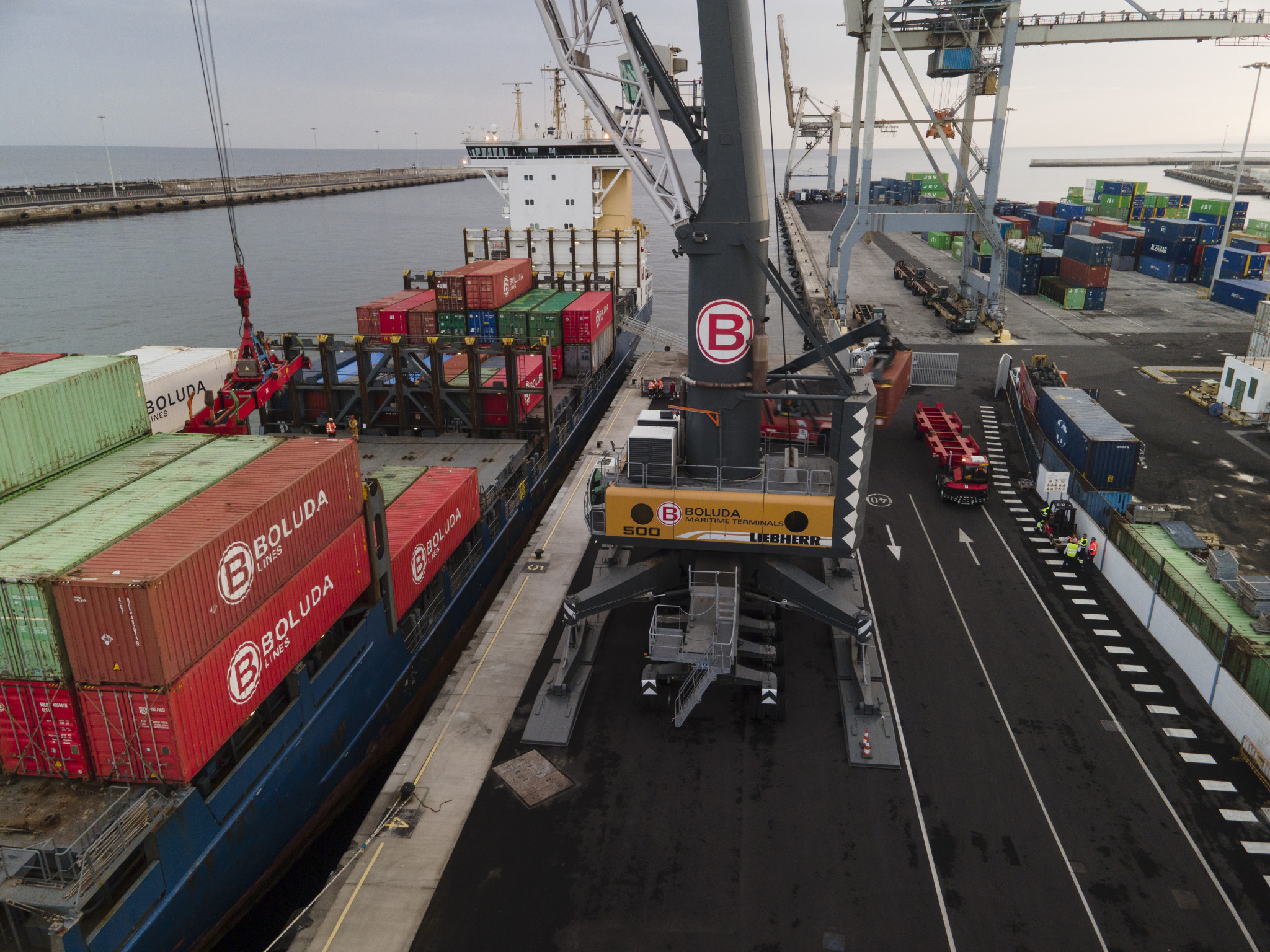Boluda Shipping has invested more than 2 million euros in the expansion of its current terminal, which has an additional 16,000 m2 of surface area. This expansion makes Boluda Maritime Terminals Santander one of the most competitive logistics terminals in our country.

Yesterday the official visit took place to mark the completion of the second phase of the container terminal works and the entry into operation of the new railway station of Boluda Maritime Terminals Santander. The event was attended by the president of Cantabria, María José Sáenz de Buruaga, and the president of the Port Authority, César Díaz, accompanied by the president of Boluda Shipping, Ignacio Boluda Ceballos.
Ignacio Boluda commented during his speech that “This project involves the addition of a new infrastructure of more than 16,000 m2 to our existing container terminal. An expansion that makes Boluda Maritime Terminals Santander one of the most competitive logistics facilities in our country, which will allow us to meet more efficiently the needs of the port and its hinterland, favouring the transit of goods and improving the logistics chain of companies, making the region’s industry more competitive”.
Sáenz de Buruaga stressed that “the start-up of the container terminal”, operated by Boluda Maritime Terminals Santander “has meant a before and after for the Port of Santander”.
An improvement that does not come alone, as it is accompanied by the entry into operation of its new two-track Iberian gauge railway terminal, which has had an investment by the Port Authority of 1.4 million euros.
The president of the Port Authority, César Díaz, pointed out that “With these installations and the work being carried out by the company, we are sure that we will exceed all expectations and continue to make progress in our commitment to Cantabria and to the companies in our hinterland, making logistics chains increasingly competitive and sustainable”.
An activity whose strategic axis is intermodality with which the company expects -thanks to the inauguration of this new terminal- to increase its operational potential and market penetration with the current four rail services that connect Santander with Madrid, Barcelona, Valencia and Southern Spain, focusing on sustainable development.
The Boluda Maritime Terminals Santander terminal has become a benchmark on the northern coast of the Iberian Peninsula, being the most modern infrastructure in Spain in which it is estimated to handle around 150,000 TEUS/year, positioning the port of Santander in the top 10 of container movement in Spanish ports.
Undoubtedly a milestone in the logistics activity of the Autonomous Community of Cantabria that strengthens the commitment of Boluda Shipping with the city of Santander, which stands as a benchmark in port sustainability.
Ignacio Boluda reiterated in his speech the importance “that the port of Santander continues with its commitment to invest in the generation of spaces to increase the capacity of the terminal and the port in order to continue providing greater service to all shipping companies interested in connecting Cantabria even more with the rest of the world”.
Boluda Maritime Terminals Santander
In fact, Boluda Maritime Terminals currently has nine maritime terminals along the Spanish coast. Last March it inaugurated its Santander terminal, which has facilities of more than 60,000 meters and a berthing line of 472 meters of quayside, in addition to the 16,000 meters of the new container terminal.
Boluda Shipping, through its shipping company Boluda Lines, is committed to the development of commercial lines to connect Santander with all of Europe. Just two months ago, it launched a new short sea shipping trade route linking Spain with the east coast of the United Kingdom and the Netherlands. This line is in addition to those already connecting the ports of Santander with Galicia, Portugal, southern Spain and the Canary Islands, and the line linking Santander with the west coast of the United Kingdom and Ireland.